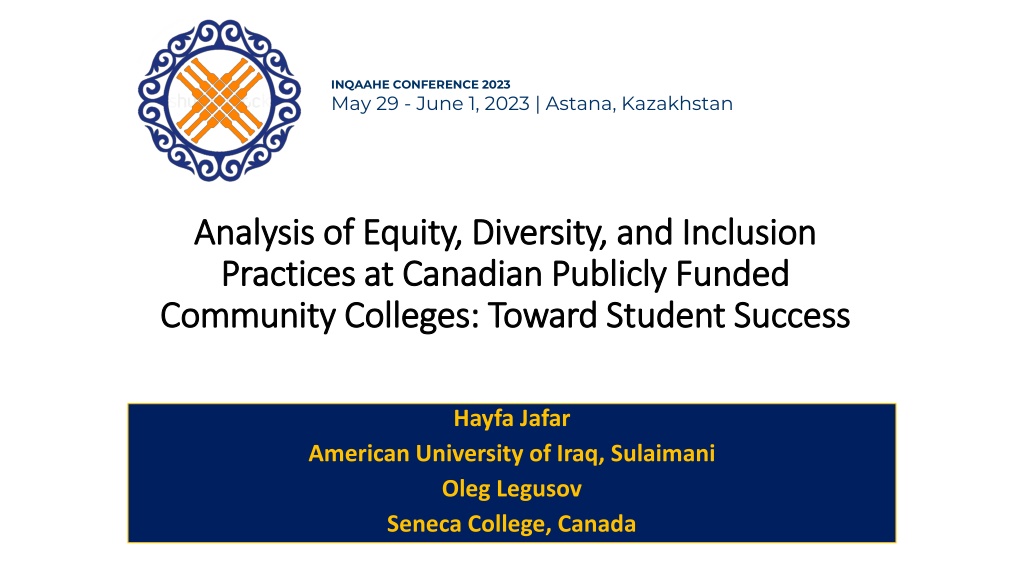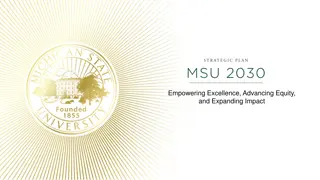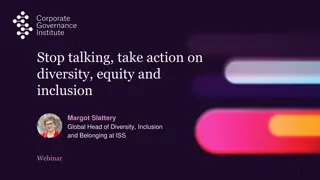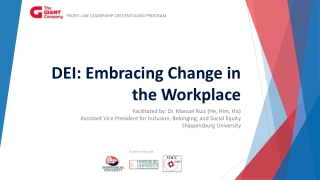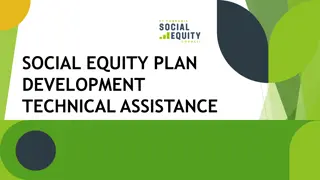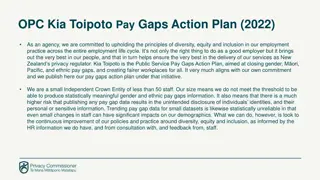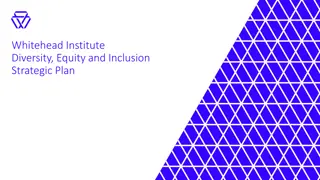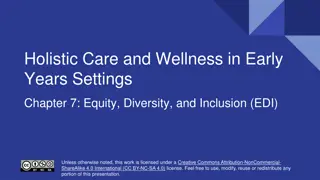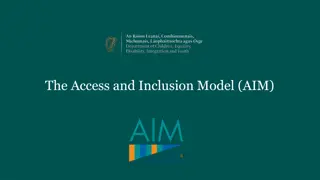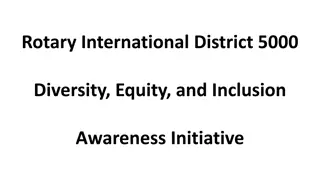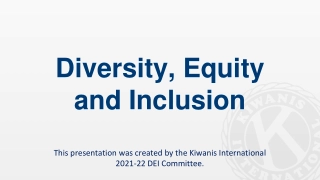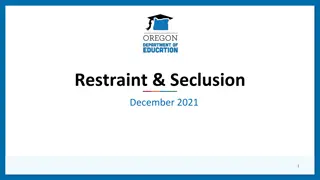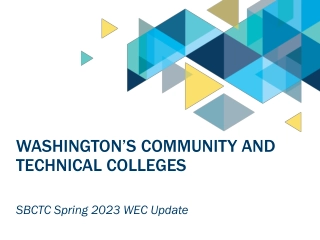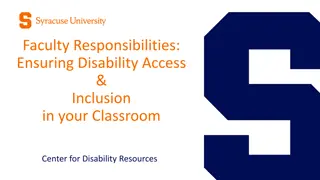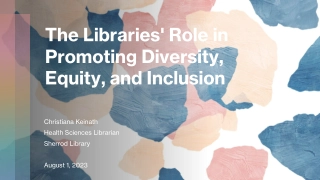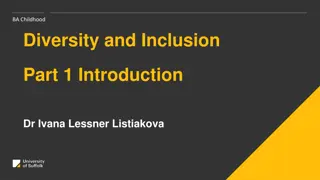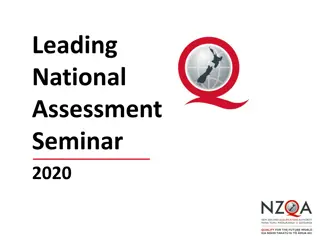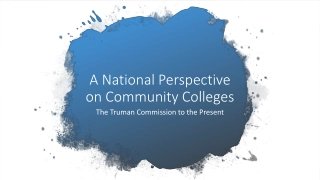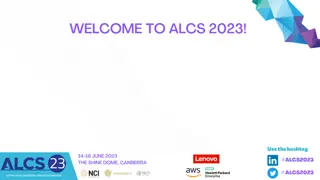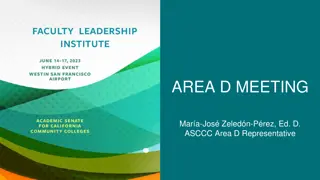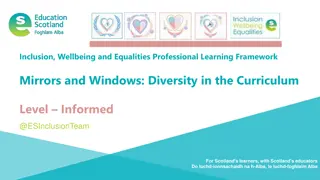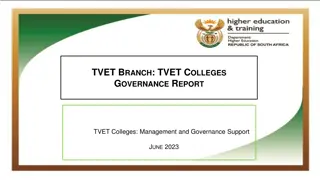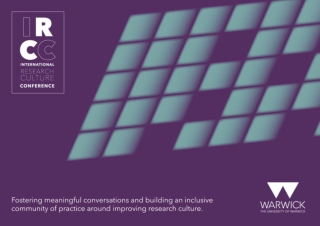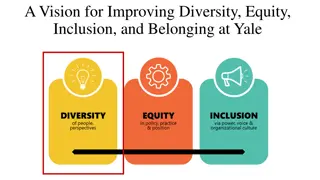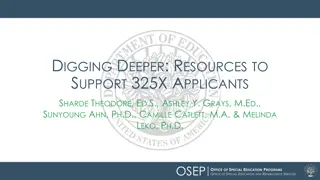Analysis of Equity, Diversity, and Inclusion Practices at Canadian Community Colleges
This research delves into how Ontario Colleges address Equity, Diversity, and Inclusion (EDI) to enhance student success. It highlights the strategies employed, evaluation of initiatives, and their impact on student outcomes. Despite a growing focus on EDI in postsecondary institutions, the effectiveness of these efforts in supporting diverse student populations remains unclear.
Download Presentation

Please find below an Image/Link to download the presentation.
The content on the website is provided AS IS for your information and personal use only. It may not be sold, licensed, or shared on other websites without obtaining consent from the author. Download presentation by click this link. If you encounter any issues during the download, it is possible that the publisher has removed the file from their server.
E N D
Presentation Transcript
INQAAHE CONFERENCE 2023 May 29 - June 1, 2023 | Astana, Kazakhstan Analysis of Equity, Diversity, and Inclusion Analysis of Equity, Diversity, and Inclusion Practices at Canadian Publicly Funded Practices at Canadian Publicly Funded Community Colleges: Toward Student Success Community Colleges: Toward Student Success Hayfa Jafar American University of Iraq, Sulaimani Oleg Legusov Seneca College, Canada
Ontario Colleges of Applied Arts and Technology (CAATs) Ontario post-secondary education system. 24 Ontario colleges Most CAATs were founded in the late 1960s Initially CAATs focused on vocational and technical education for local communities Sources: https://canadaschoolcamp.com/canadian-colleges/province-of-ontario/
Diversity at Ontario Colleges (2021-2022) Total Enrolment 192,391 Student Profile Direct Non-direct 22.7% 77.3% Student type Female Male Other gender identity 55% 45% <1% Gender <21 years 21-25 years 26-30 years 31-35 years >35 years 50% 26% 10% 5% 8% Age English French Other 87% 3% 10% First Language Indigenous identify Indigenous Canadian citizen International students Unknown Permanent resident Refugee Status 4% 50% 36% 6% 5% 1% Status in Canada Source: Colleges Ontario (2022). Student and Graduate Profiles
Why EDI? 1 2 3 4 Labour market disruptive Truth and Reconciliation Calls to Action Black Lives matters movement International students 5 6 7 8 Technological changes Changing Demographics French Identity Location 4
The Problem Even though the body of literature on EDI at postsecondary institutions is growing, it is not clear how successful such initiatives are in addressing needs and concerns of diverse students.
Research Questions What strategies do Ontario Colleges use to achieve Equity, Diversity, and Inclusion? How do Ontario Colleges evaluate the quality of EDI plans and initiatives? How do Ontario Colleges EDI initiatives contribute to student success? 6
Methodological Approach Documents Analysis Interview Techniques developed by O Leary (2014). In the interview approach, the document is treated as an informant that provides pertinent information (O Leary, 2014). Document Analyzed 7
How student success is defined within EDI context Satisfied Job ready/Employed Global Citizens HOW? Culturally-safe environment Unique college experience Individual success plans Signature Innovative Learning Experience Comprehensive range of services Customized employment support
Institutional Commitment 100% of Ontario Colleges considered EDI as part of their institutional values RESPECT We value the dignity and uniqueness of the individual. We value the equity and diversity in our community
Political Technological Structural Strategic Approaches Academic- Educational Spatial Socio-cultural 10
Political Truth & Reconciliation Adopt Indigenous mindset and way of thinking Indigenous Education Indigenous language courses Declaration on EDI Anti-Racism Policy French Language courses
Structural & Procedural Structure EDI office, committee, task force, Indigenous Reconciliation department Indigenous centered holistic services and learning for students success. Facilitate employment and career-related opportunities and supports for international students Strategy for data collection Increase capacity and capability to advance equity through responsible collection and use of data Policies Develop an Anti-Racism and Equity Policy Early alert and intervention system to support underrepresented students Admission requirements reflect equity EDI lens Establish an Equity Lens Policy Review Committee Adopt EDI lens in hiring staff/faculty and recruiting students.
Spatial Native symbolism Places of worship Land acknowledgement
Socio-cultural Awareness about systemic racism Lectures Guest speakers Seminars Training sessions Informal documents sharing
Academic and Educational Program diversity Decolonization of the curriculum (Indigenization) Internationalization of the curriculum Employability & Essential skills Career readiness Our Academic Plan is situated within a lens of inclusivity, valuing and reflecting multiple voices, identities, standpoints, and histories.
EDI Success Measures Total number and diversity of learners Enrolment of indigenous people and visible minorities Scholarships and support for indigenous people Program Diversify Indigenous learning Transition and retention Educational outcomes Students attainment of core labour market skills and global perspectives Student and employer satisfaction outcomes. Financial resources allocation Technology programs will reserve up to 30% of their seats for women.
Conclusion The findings suggest that equity, diversity and inclusion activities have become a policy priority attached to a variety of institutional action plans and performance reports. EDI is defined as creating a sense of belonging in a safe, inclusive, and welcoming environment. The majority of colleges are focusing on removing institutional barriers to equal access to education and employment for indigenous students. The most profound strategy is the structural and procedural integration of EDI units within the colleges' organizational structure and adopting an EDI lens in the hiring process of staff and faculty. Many of the EDI success measures are typical KPIs used to measure overall institutional effectiveness, such as student and employer satisfaction, retention rate, student retention, and employment rate. It remains to be seen how successful Ontario colleges are in implementing these strategies within the context of EDI agendas.
